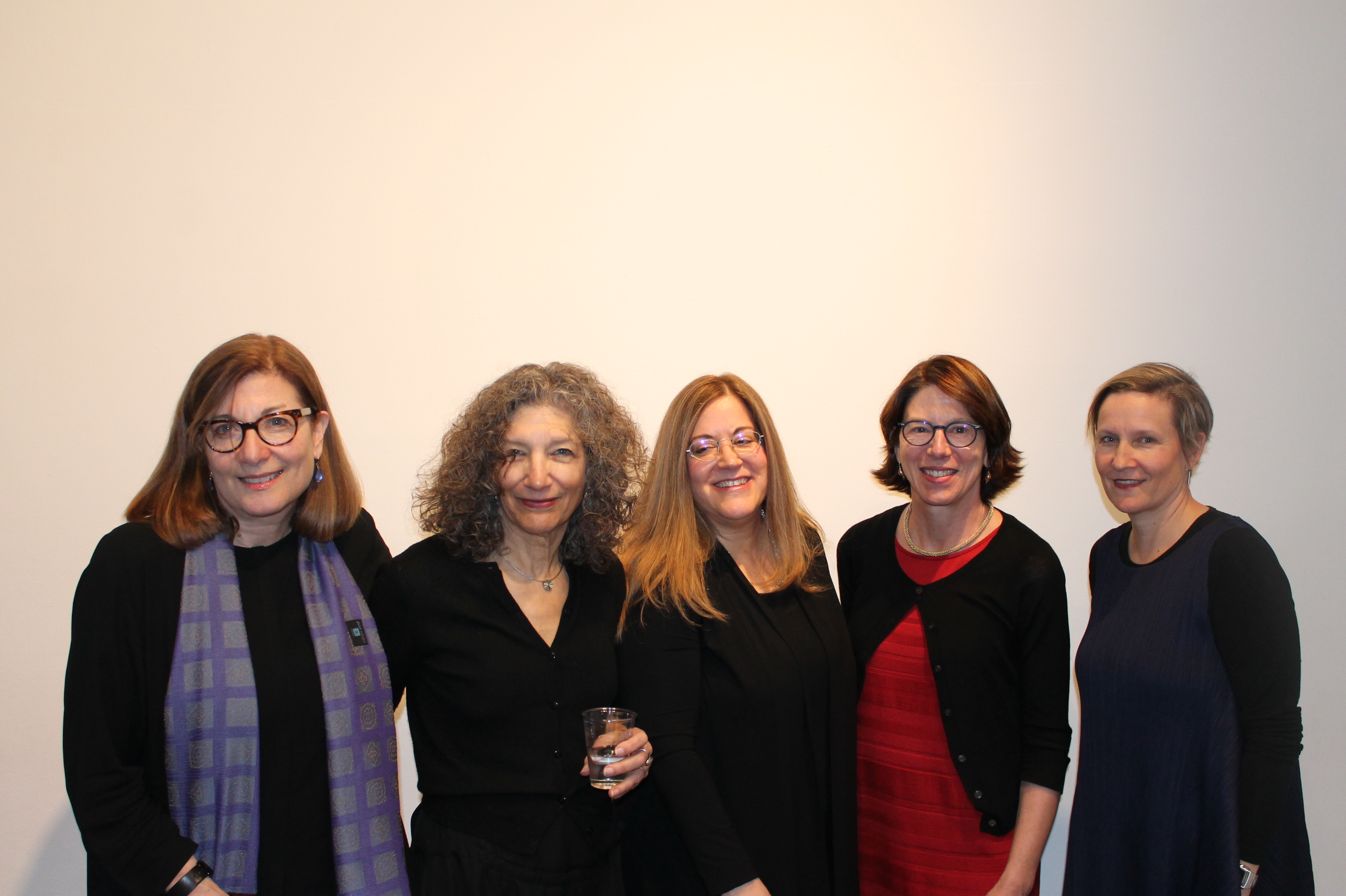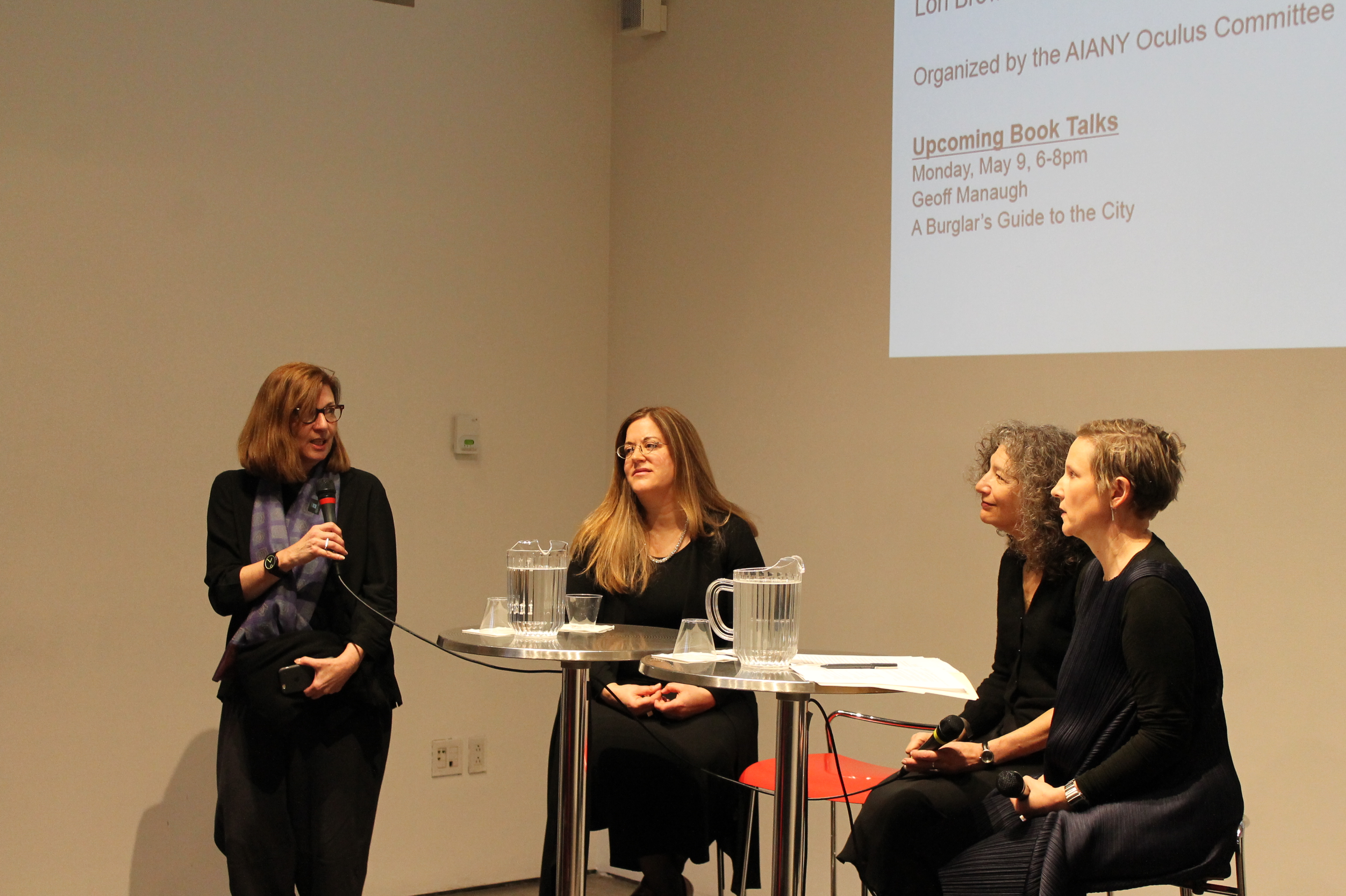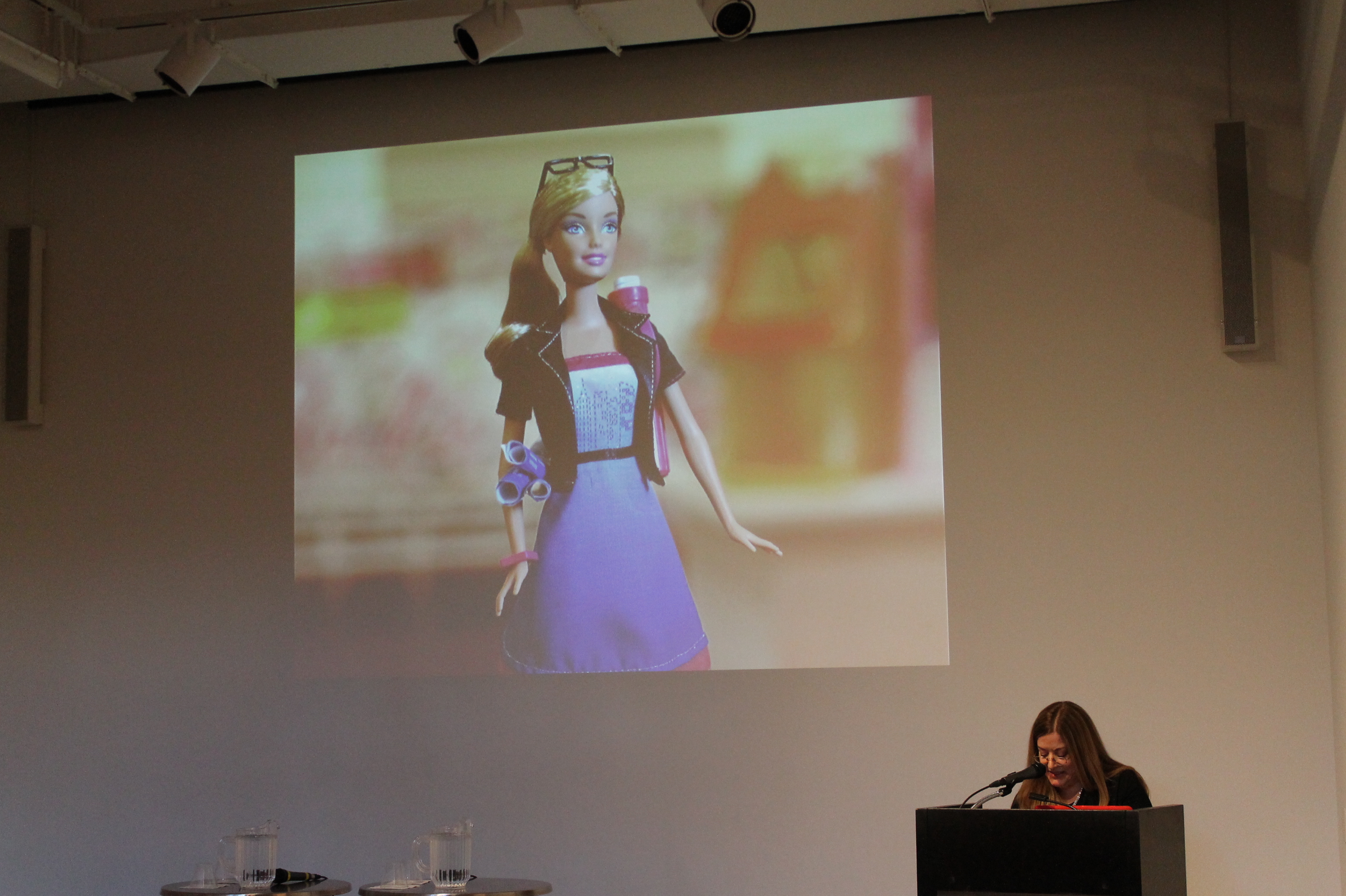by: ac
Despina Stratigakos presented her provocatively titled volume Where are the Women Architects? on 04.19.16 at the Center for Architecture. Following her presentation, Lori Brown, AIA, associate professor of Architecture at Syracuse University and co-founder of Architexx, Joan Blumenfeld, FAIA, IIDA, LEED AP, principal at Perkins+Will and Chair of the Beverly Willis Architecture Foundation; and Stratigakos presided over a discussion about the book’s findings. The lecture hall at the Center for Architecture was packed with second-, third-, fifth-, and sixth-wave feminists.
The form of Stratigakos’ book is conflicting in and of itself; a very slim volume, reminiscent of a suffragette pamphlet rather than a revolutionary red book. The initial response is slightly disappointing: “Really? Is this all there is on the subject?” The first essay is a reputable academic text that outlines the historical context, provides the reader with sufficient data to illustrate the case, and then neatly points out that we are still asking the same questions that we were in the 19th century. The argument is presented in an organized fashion, but only when Stratigakos cites a RIBA initiative to “out” London firms that maintain unequal pay practices does the reader’s interest get peaked.
Stratigakos’ essay on architectural prizes and the Internet protest concerning Denise Scott Brown’s exclusion from the Pritzker Prize offers a fresh perspective. The essay frames the Internet as the ultimate feminist tool; a new paradigm for how women write their own lives. She explains that is was not just the two young women architects who initiated the online petition to have the Pritzker jury rectify their mistake, backed by Scott Brown’s solid assertion that she deserved the recognition and accolades awarded to her partner. This, and the powerful work done by petition initiators Arielle Assouline-Licten and Caroline James, and editing Wikipedia pages for women architects align with feminist writer’s Carolyn Heilbrun’s assertion that there needs to be a new language, voice, and form to discuss the constructs of female achievement.
Both in the book and in her talk, Stratigakos jolts us out of passivity when she presents her Architect Barbie project. A brand of research using design tools rather than written scholarship, Architect Barbie, designed by the author’s University of Michigan students, changed the game regarding what brand of feminist rhetoric one is to employ. She was able to identify a huge gap of experience in the generations of contemporary women architects just by exploring their reactions to Architect Barbie. She was especially surprised by her students’ opinions about how Barbie should “look”: pink dress is okay, high heels are de rigueur, and only use black as an accent in daywear. Oh, and glitter is a right, not a privilege. Reading blog comments to the book talk audience, opinions ranged from stern feminist judgments to inquiry about where to buy that fab pink drawing tube. With this project, Stratigakos begins to illustrate a method of activism that looks like it could actually work. Her book seems to have been produced as a precursor/guidebook to activism more than a scholarly codification.
There are a few nagging issues that are not quite transparent in Stratigakos’ arguments. The actual definition of a woman architect is never clarified. The impression the reader garners from the text is that the ideal of success is the corporate (dare I say male) model: monetarily successful, high in the ranks of a corporate structure (and without a male partner), or formed in the star architect model. In addition, an examination of the entire life of a woman architect seems to be forsaken in favor of the young entry-level designer grappling with youthful life questions, such as how to manage a family. Defining a career in architecture as a life, a method of thinking rather than a job, might serve Stratigakos’ quest for finding more women architects. It’s a woman’s role in contemporary culture to redefine the parameters of any profession, not operate within the limited structure of corporate architecture. There are perhaps more women who practice architecture, but perhaps we have never seen the profession practiced this way before.
And Barbie’s skirt? A little long, considering her choice of heels and the short jacket.
Event: Oculus Book Talk: Where Are the Women Architects?
Location: Center for Architecture, 04.19.16
Speakers: Despina Stratigakos, Associate Professor and Interim Chair of Architecture, University at Buffalo, State University of New York; Lori Brown, AIA, Associate Professor of Architecture, Syracuse University; Co-founder, Architexx; Author, Feminist Practices: Interdisciplinary Approaches to Women in Architecture and Contested Spaces: Abortion Clinics, Women’s Shelters and Hospitals; Joan Blumenfeld, FAIA, IIDA, LEED AP, 2007 AIANY President, Chair Beverly Willis Architecture Foundation, Principal, Perkins + Will; and Nancy Levinson, Editor, Places Journal (introduction)
Organized by: AIANY Oculus Committee










